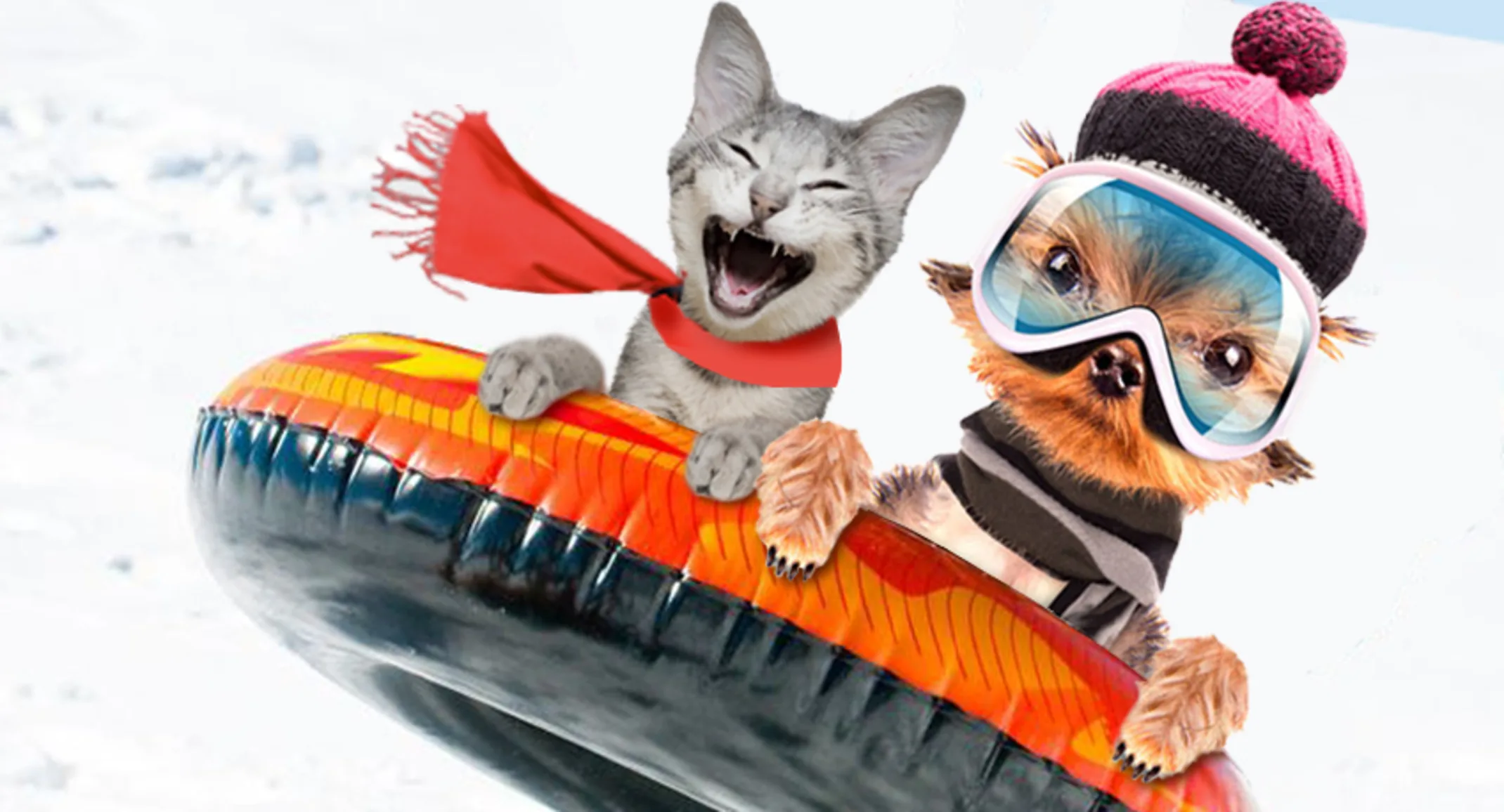Winter Weather Warnings for Pets
Pet Safety

BRRR…IT’S COLD
Extremely cold temperatures can cause serious problems for animals who are outside for even short periods of time. Most pets are not bred to withstand temperatures below freezing (32 degrees Fahrenheit). Use this as a guideline: If it is too cold for you to be outside without a coat, it is too cold for your pet.
Dangers to outdoor dogs and cats from the weather include:
Frostbite of ear tips, extremities- in particular footpads
Hypothermia
Death
Injuries can also occur when indoor pets go outside to play or use the bathroom:
Orthopedic injuries from slipping on icy surfaces
Injuries to pads and paws from sharp ice fragments
Irritation in between toes from snow/ice balls forming in fur around toes
Falling through thin ice into freezing water
Consider purchasing booties for your dog to protect paws during a wintertime walk or even salt placed outside to melt the ice.
If your pet doesn’t wear booties, be sure to examine your pet’s feet when you come inside. Check for snow or ice accumulation especially between the toes. Slowly and gently apply warm water to release the snow balls from the fur.
HYPOTHERMIA
Hypothermia occurs when an animal’s internal temperature becomes too low for the body to function normally. It can affect all animals but those who are wet, small, elderly, young, or outside with no shelter are most affected.
Symptoms of hypothermia:
Severe lethargy
Decreased appetite
Decreased responsiveness
Low body temperature (on average below 98 degrees Fahrenheit)
Discoloration of skin – especially red or blackened extremities
Hypothermia is a medical emergency and you should contact your veterinarian or a 24-hour veterinary emergency hospital immediately if you find an animal with these symptoms.
If it is absolutely necessary for your pet to be outdoors for an extended period of time in cold weather, make sure your pet has access to the following at all times:
Shelter with draft-proof walls and good bedding such as straw or cedar
Water that has not frozen
Fresh food (exposure to the cold increases the body’s need for fuel and calories)
Blankets and coats
ICE MELT & ANTIFREEZE
Other cold weather hazards include exposure to ice melt and antifreeze.
While ice melt is not toxic in small amounts, these salt-based products can cause irritation to your pet’s mouth and skin. They can also cause GI signs if large volumes are ingested. The possibility also exists for sodium toxicity and hyperkalemia if an animal eats large quantities. If possible, purchase pet-friendly ice melt to use at home. If your pet is exposed to ice melt during walks on streets and sidewalks away from home, wipe off your pet’s paws to prevent licking and ingestion.
Antifreeze is an extremely dangerous winter toxin. Pets are attracted to the odor and taste of it. Ingestion of antifreeze can cause acute, fatal kidney failure. Be sure to clean up any antifreeze spills that may result when adding or changing the antifreeze in your car and make sure antifreeze is in sealed containers that are out of reach of children and pets. If your pet does ingest antifreeze, seek immediate veterinary attention.
INJURIES
Outdoor cats often find warmth and protection by hiding in the wheel wells of cars or crawling under the hood and snuggling on top of the engine. To protect them from injury, be sure to bang on the hood of your car before starting it. This will help warn the cats and keep them safe from injury.
Should your pet experience an emergency this winter, contact your primary care veterinarian or one of Red Bank Veterinary Hospital’s emergency hospitals in Cherry Hill, Tinton Falls, Linwood or Hillsborough by calling (732) 747-3636.
